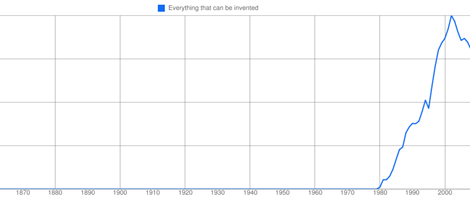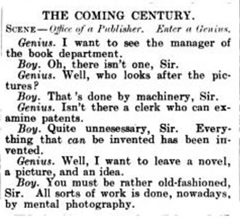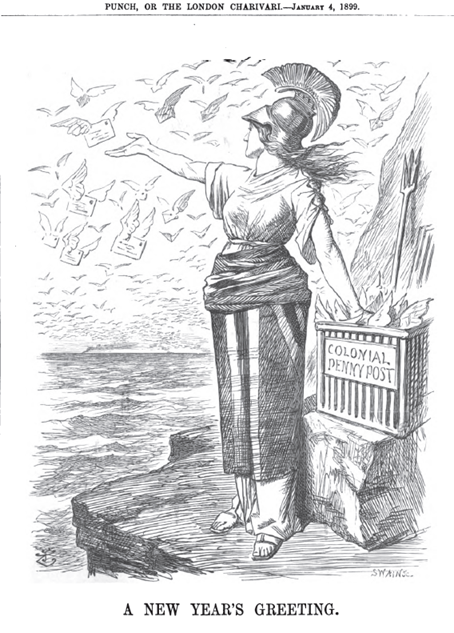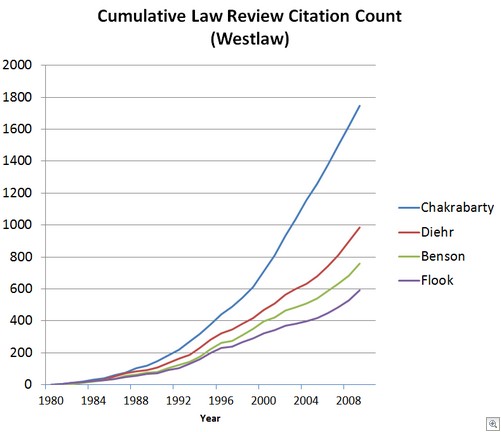Guest Post by Martin Goetz
Back on November 30, 2009, Patently-O published my article “In Defense of Software Patents” in response to the editorial “Abandoning Software Patents” by Ciaran O’Riordan, Director of End Software Patents (posted on Patently-O on November 6, 2009) which had as its premise that software companies are trying to protect “software ideas”.
In this article I comment on the Bilski Opinion as well as give some concrete examples of software-only patents as well as hardware/software patents. Also, my previous article received hundreds of comments, many being negative, and part of this new post is in response to those negative comments.
Since the June 28th Supreme Court Bilski decision there have been many articles[1] on what the Opinion stated and inferred about the patentability of software.
The Opinion restated what previous Supreme Courts concluded: that laws of nature, physical phenomena, mathematics, mathematical formulas (by themselves), algorithms (by themselves), and abstract ideas (which would include software ideas) are not eligible for patent protection.
While the Bilski Opinion never directly questioned the patentability of software, the Justices wrote extensively about the meaning of Section 101, the meaning of the term “process” and why the test for patent eligibility should not exclusively be “the machine-or –transformation test”. Justice Kennedy, with the concurrence of all other Supreme Court members, wrote that the Information Age puts innovation in the hands of more people and raises new difficulties for the patent law (and the Patent Office) to determine who should or should not receive patent protection.[2]
My November 2009 Patently-O article “In Defense of Software Patents” produced hundreds of comments. Many wrote that they were against the patenting of software because software was an “algorithm” or “mathematics”. In that article my primary argument was that a computer software invention is as patentable as a computer hardware invention and the only difference is the mode of implementation. My thesis was that Software Product companies in the Software Industry are looking to patent a machine process and not a computer program, which is protected by the copyright law. I showed why software product companies can be viewed as high technology manufacturing entities and should be just as eligible for patent protection as computer hardware companies.
In this article I give examples of patents where the preferred implementation of an inventive machine process is in software (via a computer program[3]), hardware (via circuitry), or a combination of both software and hardware.
There is little argument that “processes” and “machine processes” are patentable subject matter[4] The question has always been about the nature of software and what one is trying to patent. For over 40 years I have been involved in that argument since I received the first software patent in 1968 for an innovative way to sort large amounts data on a computer that had tape drives that could only read and write data in a forward direction (See Patent # 3,380,029, Sorting System, Issued April 23, 1968).
The Sorting System patent was dubbed a software patent but it could also have been a computer hardware patent. It was dubbed a software patent solely because the preferred implementation (the disclosure) was a logic chart (which is recognized by the patent office as a proper disclosure). My Sorting System patent would not have been controversial if the disclosure had been hardware circuitry since there were many hardware patents for sorting data on special-purpose computers and special apparatus. In my patent application I referenced six of those patents which all had unique hardware circuitry in their patent disclosure. Three of them are available online, courtesy of Google Patent Search[5].
From 1968 through 1980 my previous company, Applied Data Research filed Amicus briefs in the Prater & Wei, Benson, Johnson, Flook, and Diehr cases in which we argued that a machine process patentable in hardware is equally patentable in software. Here is exactly how we posed a “Question of Law” “in our 1980 Diehr brief:
Whether a computerized machine or industrial process that is patentable subject matter under 35 USC 101 when constructed with a hardware program (wired circuits) would also be patentable subject matter when constructed with a stored computer program (i.e., firmware or software)?
The USPTO is currently in agreement with that “Question of Law” when in 1996 it published its Examination Guidelines for Computer-Related Inventions (Final Version). The Guidelines stated in its Introduction the following: “The Guidelines alter the procedure office personnel will follow when examining applications drawn to computer-related inventions and are equally applicable to claimed inventions implemented in hardware or software.”
In that 1980 Diehr brief we also posed the following argument to the Supreme Court:
An inventor demonstrates his new invention to his patent attorney with great pride; he has developed a cabinet for reading books out loud to the blind. The cabinet contains both a reading and talking computer. After the demonstration, the patent attorney responds:
What's inside the cabinet? Did you build it with software or hardware (a stored program or hardware circuitry)? If built with a hardware program, your machine would be patentable. But if you built it with a stored program, the Patent Office would say it was merely mathematics and, therefore, unpatentable.”
The example above of a hypothetical “cabinet for the blind” invention was back in 1980 in our Diehr Amicus brief.
Twenty years later, in 2000, a renowned inventor, Ray Kurzweil received a patent named Reading System which Reads Aloud From An Image Representation Of A Document. The patent disclosure shows a diagram of a monitor, scanner, speakers, and a PC computer composed of a processor, storage and a keyboard. The essence of the disclosure and the invention is a logic chart describing a machine system which interacts with a speech synchronizer and the various devices.
The first sentence of the abstract in the patent stated “a reading system includes a computer and a mass storage device including software comprising instructions for causing a computer to accept an image file generated from optically scanning an image of a document.”
At that time, Ray Kurzweil’s company, Kurzweil Educational Systems marketed a special purpose hardware/software system called the Kurzweil 3000 Reading Machine which was marketed to the blind and poor readers. Their 2000 year patent protected this product from imitators. Today the company sells a software only system called Kurzweil 3000 and continues to have the protection of the patent system thru his original 2000 patent and with additional patents e.g., Reducing processing latency in optical character recognition for portable reading machine (which is a software-only patent).
Few would argue that the Kurzweil 3000 Reading Machine was not an invention and not deserving of a patent.
While I am a strong advocate for software-related patents I have always been opposed to the patenting of Business Method Patents (BMPs). In my 2006 article Patents: Where's the Invention? I stated that the Patent Office should do what the European Patent Convention did when it ruled that anything that consists of "schemes, rules and methods for performing mental acts, playing games or doing business, and programs for computers" is not an invention and therefore not patentable.” Justice Stevens, in his Opinion[6] also wanted to ban BMP’s from being patentable subject matter when he concluded that a method of doing business is not a “process” under 101.
Although the Bilski Opinion disallowed the Bilski application they stated that under certain conditions business methods could still be patentable subject matter. On July 27th the USPTO set up more stringent rules for the issuance of BMPs in their Interim Guidance for Determining Subject Matter Eligibility for Process Claims in View of Bilski v. Kappos. In many ways those guidelines are similar to the way computer software and hardware patents are currently being treated under the 1996 Guidelines for Computer-Related Inventions.
One of the greatest challenges facing the Patent office today for BMPs, software or hardware patent applications is in discovering prior art and determining if there is an invention. The USPTO “Peer to Patent” pilot project” which allows the public (including professionals in their respective fields) to comment on patent applications is still in its infancy, but offers the potential to assist the Patent Office in rejecting the large number of applications that are filed each year. The stated goal of the pilot project was to “connect the USPTO to an open network of experts online.” Also, private companies e.g., the Article One Partners, a patent research firm, have the potential to significantly reduce the large number of patent litigation cases.
In conclusion, while I am a strong proponent of software patents I am very aware, and agree with, many of the arguments against patents because of patent trolls, frivolous patents, e.g. Amazon’s one-click patent, and frivolous patent litigation that can put companies out of business. And I support changes in the Patent Law to reduce those problems. But if one believes in the how the Patent System has fostered innovation and helped the US grow and prosper, then there is no rational reason to eliminate technology inventions that use software as its implementation.
In my previous article there were many comments from die-hards that continued to believe that software companies are trying to patent a computer program, Whether those die-hards still believe that a computer program is mathematics, or a mathematical formula, or an algorithm, or an abstract idea, so be it. Computer software programs are not what software companies are trying to patent. A software patent invention is on a unique machine process —- nothing more and nothing less. And the criteria should be 1. Innovation 2. A proper disclosure and 3. Usefulness — the same requirement that is the criteria for all patentable subject matter.
[1] Click below for a sample of many of these articles. Reading the Bilski Tea Leaves For What The Supreme Court Thinks Of Software Patents Comments on Bilski and Software Patents; Here's Bilski: It's Affirmed, But . . .No Decision on Software Patentability; Supreme Court Decision Raises Software Patent Questions; Supreme Court 'Bilski' ruling doesn't rule out software, business-method patents; Software patent debate rages on; Software, pharmaceutical, and business method patents survive; Patent Office Says No to Supreme Court and Software Patents; Death Knell For Software Patents; Software Is Not Necessarily Business Method; Software Patents and Business Method Patents Still Possible after Bilski Supreme Court Decision.
[2](Underlining and bold added) (pages 9 & 10) “The machine-or-transformation test may well provide a sufficient basis for evaluating processes similar to those in the Industrial Age—for example, inventions grounded in a physical or other tangible form. But there are reasons to doubt whether the test should be the sole criterion for determining the patentability of inventions in the Information Age. As numerous amicus briefs argue, the machine-or-transformation test would create uncertainty as to the patentability of software, advanced diagnostic medicine techniques, and inventions based on linear programming, data compression, and the manipulation of digital signals. See, e.g., Brief for Business Software Alliance 24– 25; Brief for Biotechnology Industry Organization et al. 14–27; Brief for Boston Patent Law Association 8–15; Brief for Houston Intellectual Property Law Association 17–22; Brief for Dolby Labs., Inc., et al.”
The Opinion went on to state:
It is important to emphasize that the Court today is not commenting on the patentability of any particular invention, let alone holding that any of the above-mentioned technologies from the Information Age should or should not receive patent protection. This Age puts the possibility of innovation in the hands of more people and raises new difficulties for the patent law. With ever more people trying to innovate and thus seeking patent protections for their inventions, the patent law faces a great challenge in striking the balance between protecting inventors and not granting monopolies over procedures that others would discover by independent, creative application of general principles. Nothing in this opinion should be read to take a position on where that balance ought to be struck.
[3] While the implementation is in a computer program, the disclosure for one skilled in the art, are thru flow charts (also called logic charts) and thru block diagrams.
[4]. The Bilski Opinion closely examined the meaning and the words of 35 U.S.C 101. From 35 U.S.C. 101: Inventions patentable: Whoever invents or discovers any new and useful process, machine, manufacture, or composition of matter, or any new and useful improvement thereof, may obtain a patent there for, subject to the conditions and requirements of this title.
[5] The Sorting Patents below were described thru and/or gates, and as methods and apparatus for sorting data. Sorting Device, Fillebrown, 5/1961 #2,985,864; Sorting Apparatus, Guerber, 5/1960 #2,935,732; Apparatus for sorting of Recorded Digital data, Dirks 3/1966 #3,242,466.
[6] (page 15) Because the text of §101 does not on its face convey the scope of patentable processes, it is necessary, in my view, to review the history of our patent law in some detail. This approach yields a much more straightforward answer to this case than the Court’s. As I read the history, it strongly supports the conclusion that a method of doing business is not a “process” under §101.



